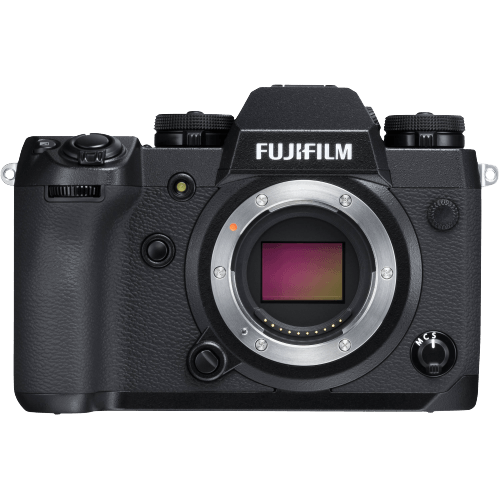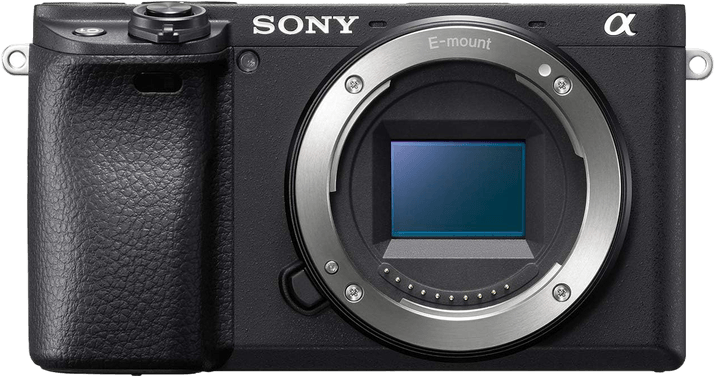Fujifilm X-H1 vs Sony a6400 Comparison
Fujifilm X-H1

Sony a6400

The Fujifilm X-H1 takes the lead with a score of 75/100, while the Sony a6400 trails behind at 70/100. Both cameras are mirrorless and were released in 2018 and 2019, respectively. They share similarities in their camera types and launch dates, but the differences lie in their specifications.
The Fujifilm X-H1 excels with its larger size (140 x 97 x 86mm) and heavier weight (673g), which may provide better stability and grip for users. It does, however, come at a higher launch price of $1899.
On the other hand, the Sony a6400 is more compact (120 x 67 x 60mm) and lightweight (403g), making it a more portable option. Additionally, its launch price of $900 is significantly lower than the Fujifilm X-H1.
Taking these factors into account, the Fujifilm X-H1’s higher score reflects its perceived better handling and stability, while the Sony a6400 offers a more budget-friendly and portable alternative.
Fujifilm X-H1 vs Sony a6400 Overview and Optics
The Fujifilm X-H1 takes the lead in our optics comparison with a score of 71/100, while the Sony a6400 scores slightly lower at 68/100. Both cameras share some common specifications including 24-megapixel CMOS sensors, APS-C sensor size, and similar lens mounts – Fujifilm X for the X-H1 and Sony E for the a6400.
The Fujifilm X-H1 outperforms the Sony a6400 in several aspects. With a faster shooting speed of 14 frames per second, the X-H1 captures images more rapidly than the a6400’s 11 frames per second. Additionally, the X-H1 features image stabilization, providing steady shots and reducing the risk of blurry images, a feature absent in the a6400. The X-Processor Pro in the X-H1 also ensures optimal performance and image quality.
On the other hand, the Sony a6400 has a slightly higher megapixel count of 24.2, which may result in marginally better image resolution. Furthermore, the a6400’s sensor has a DXOMARK score of 83, providing an objective measure of its performance. However, it is important to note that DXOMARK does not score Fujifilm cameras, so a direct comparison cannot be made in this regard.
In this optics comparison, the Fujifilm X-H1 emerges as the winner due to its faster shooting speed and image stabilization feature. While the Sony a6400 has a marginally higher megapixel count and a DXOMARK score, it lacks image stabilization which is an essential feature for many photographers. Therefore, the Fujifilm X-H1 is the better choice in terms of optics.
Fujifilm X-H1 vs Sony a6400 Video Performance
The Sony a6400 outperforms the Fujifilm X-H1 in video capabilities, scoring 91/100 compared to the X-H1’s 83/100. Both cameras share some common specifications, such as 4K max video resolution and built-in time-lapse functionality. However, there are notable differences that give the a6400 an edge over its competitor.
The Sony a6400 offers a higher max video frame rate of 120fps, while the Fujifilm X-H1 is limited to 60fps. This difference allows the a6400 to capture smoother and more detailed slow-motion footage, providing more creative possibilities for videographers. Additionally, the a6400 has a smaller max video dimension of 3840 x 2160, which may result in faster processing and smaller file sizes.
On the other hand, the Fujifilm X-H1 does have a larger max video dimension of 4096 x 2160, which can provide a slightly wider field of view. However, this advantage is relatively minor compared to the benefits offered by the a6400’s higher frame rate and overall video score.
Taking these factors into account, it is evident that the Sony a6400 is the superior choice for video capabilities. Its higher video score, faster frame rate, and smaller max video dimensions make it a better option for those prioritizing video features in their camera. While the Fujifilm X-H1 does have a marginally larger video dimension, this advantage is outweighed by the a6400’s other benefits.
Fujifilm X-H1 vs Sony a6400 Features and Benefits
The Fujifilm X-H1 outperforms the Sony a6400 in features, with a score of 83/100 compared to the a6400’s 81/100. Both cameras share several similarities in their specifications. They both have 3-inch touchscreens, flip screens, and no GPS. Additionally, both cameras offer WiFi and Bluetooth connectivity.
The Fujifilm X-H1 stands out due to its higher screen resolution of 1,040,000 dots, compared to the Sony a6400’s 921,600 dots. This difference means that the X-H1 provides a clearer and sharper image on its screen, which can be essential for photographers when framing shots or reviewing images on the go.
On the other hand, the Sony a6400 still has some advantages. Although it has a lower feature score, it may excel in other areas such as performance, image quality, or value for money (not covered in this comparison). These factors might make the a6400 a more suitable choice for certain users depending on their specific needs and preferences.
Considering the feature comparison, the Fujifilm X-H1 takes the lead with its higher screen resolution, which contributes to its overall higher feature score. This advantage can be crucial for photographers who prioritize image clarity on their camera screens. However, it is essential to remember that other factors may influence a user’s choice between these two cameras, and the Sony a6400 might still be a strong competitor in those areas. Ultimately, the decision between the Fujifilm X-H1 and Sony a6400 should be based on an individual’s specific requirements and priorities.
Fujifilm X-H1 vs Sony a6400 Storage and Battery
The Fujifilm X-H1 outperforms the Sony a6400 in storage and battery, scoring 68/100, while the Sony a6400 scores 31/100. Both cameras accept SD/SDHC/SDXC memory cards and offer USB charging. However, the Fujifilm X-H1 has two memory card slots, making it more convenient for photographers who need extra storage. The X-H1 also supports faster UHS-II cards, ensuring quicker data transfer.
Despite having a lower score, the Sony a6400 has an advantage in battery life, providing 410 shots per charge compared to the Fujifilm X-H1’s 310 shots. The a6400 also accepts Memory Stick Duo cards, offering an additional storage option.
To sum up, the Fujifilm X-H1 offers better storage capabilities with its dual memory card slots and UHS-II compatibility, while the Sony a6400 has a longer battery life and an extra storage option with Memory Stick Duo compatibility.
Fujifilm X-H1 vs Sony a6400 – Our Verdict
Are you still undecided about which camera is right for you? Have a look at these popular comparisons that feature the Fujifilm X-H1 or the Sony a6400:

